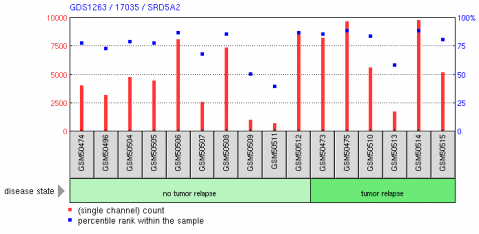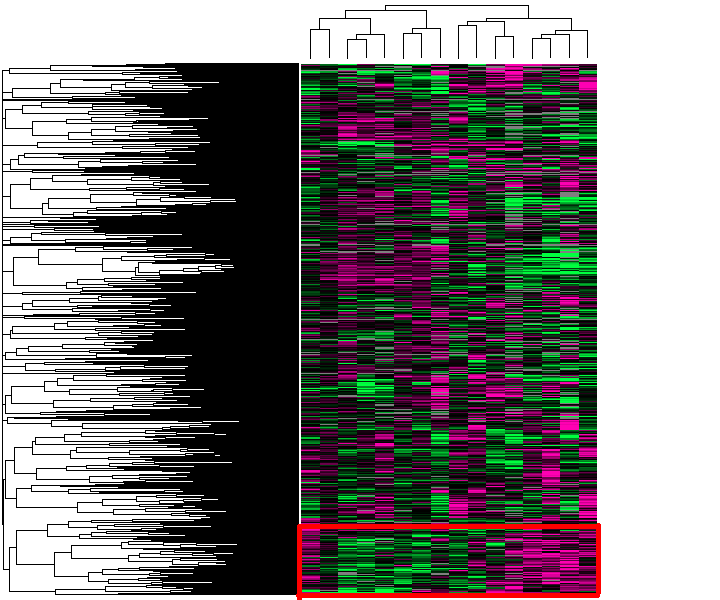This web page was produced as an assignment for Gen677 at UW-Madison Spring 2009.
Phenotypes Ontology
Within Worms
I was able to find a couple of homologous genes to SRD5A2 in Wormbase. All three genes were 3-oxo-5-alpha 4 dehydrogenases (same as SRD5A2) and had a maximum e value of 2e-26. The three genes were F42F12.3, F19H6.4, and ZK1251.3. In all of the genomic scans using RNAi, there were no mutant phenotypes observed for these genes. In fact the only available videos of the first gene shows the normally dividing embryo. Phenobank also confirms that multiple tests showed wildtype results. This enzyme does not seem to be necessary for embryonic development or sexual determination in this organism (1).
Arabidopsis Phenotypes
Please check out my Plant Page to see mutant phenotypes.
In Human Expression Profiling
Although not directly analyzing the balding condition, this expression profile from GEO on colon cancer tumor relapse is rather interesting.
Although the data set is rather small, it appears that the average expression of SRD5A2(red) is somewhat higher in patients with tumor relapse. Also the percentage of expression within each sample(blue squares) appears to be fairly consistent in both the relapse and non-relapse categories. If the expression of SRD5A2 is much higher, but the percent rank remains the same as when it is expressed at a lower level, there may be something that is making up for that difference that would contribute to the observed condition. This could be increased expression of other genes that is causing the relapse.
Using a Human 19K oligo array, GEO data set cluster analysis compared the expression of over 19,000 genes. With so many genes, it is very hard to pinpoint the profile of SRD5A2, but the red box indicates a subset of genes that seem to follow the same pattern. This may be a set of genes that are coordinately expressed in colon cancer (in this case) and could provide functional insight of the disease.
References
1. Yi, W., Ross, J.M., Zarkower, D. 2000. Mab-3 is a direct tra-1 target gene regulating diverse aspects of C. elegans male sexual development and behavior. Devlopment. 127:20(4469-4480)
2. Gene Expression Omnibus (GEO)
3. Wormbase


